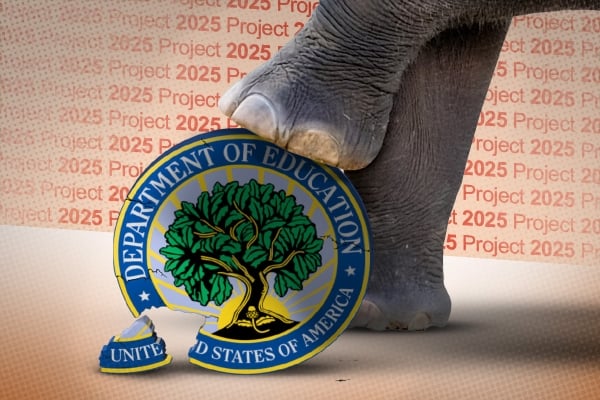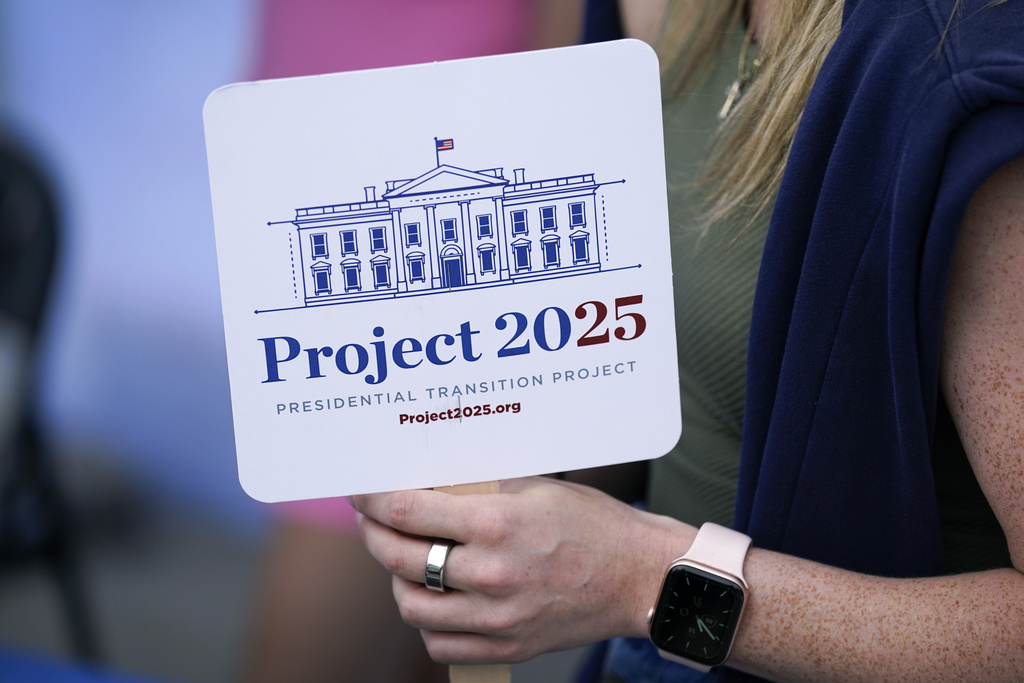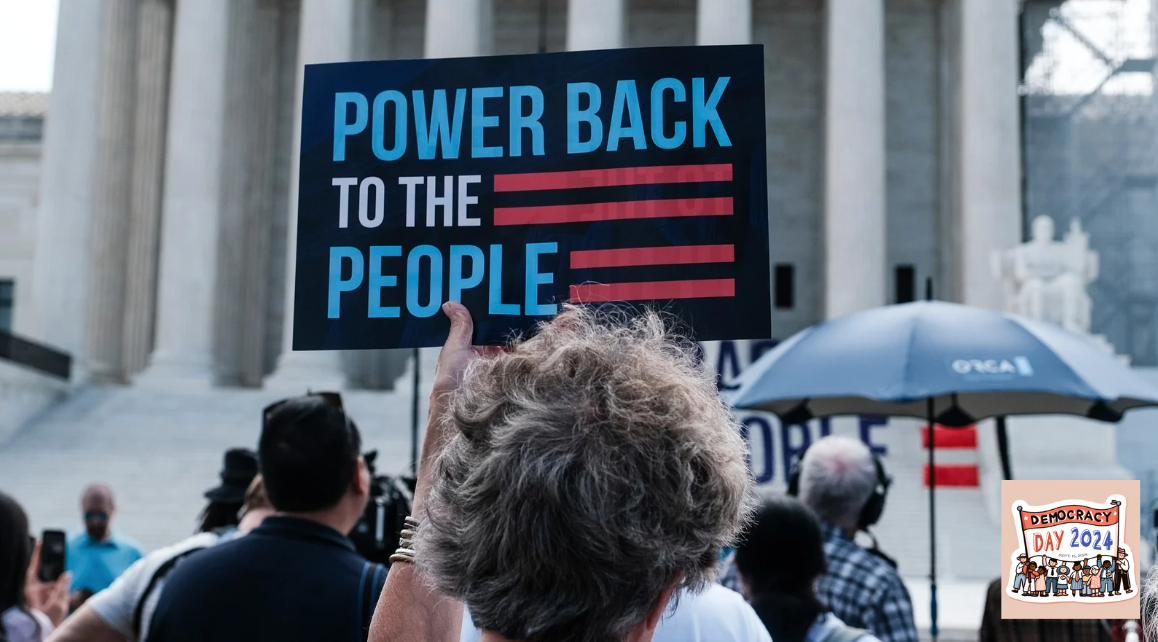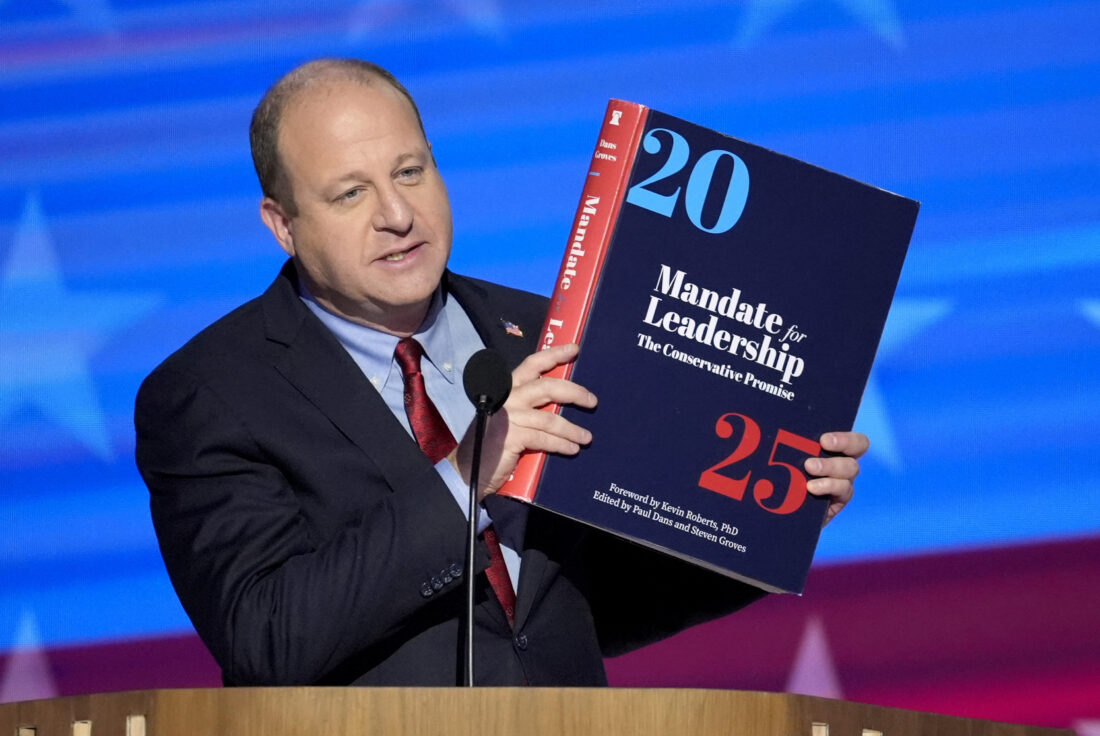Originally at https://www.insidehighered.com
A conservative blueprint for a second Trump administration calls for fundamentally reshaping the government and federal higher education policy.
Spearheaded by the Heritage Foundation, a conservative think tank, Project 2025 offers a vision of a radically overhauled and pared-down federal government that’s largely staffed by party loyalists, free of “woke culture warriors” and more responsive to the priorities of the president. While the nearly 900-page policy manual has been in the works for more than two years, its policy recommendations have garnered greater attention and scrutiny in recent months as the presidential election heats up. Critics say the plan represents an attempt to weaken constitutional checks and balances and take away personal freedoms.
“This is an attempt to basically rearrange who has power and who doesn’t,” said Michael Podhorzer, a senior fellow at the Center for American Progress, a liberal think tank that’s worked in recent months to raise public awareness of the blueprint and its potential implications. “It’s authoritarian, because this agenda cannot be implemented by anything remotely like a democratic process.”
President Biden and other Democrats have increasingly sounded the alarm about Project 2025 ahead of the presidential election and sought to tie its proposals—particularly those restricting access to abortion and firing civil servants—to former president Trump. In response, Trump has recently tried to distance himself from the effort, saying, “I wish them luck, but I have nothing to do with them.” But more than 30 former Trump aides and officials are involved with the project, including the two people spearheading it, according to an analysis from the investigative site Popular Information.
The manual, titled “Mandate for Leadership: The Conservative Promise,” outlines a wide range of policy goals for every federal agency along with details about the new legislation, regulations and executive orders that would be needed to make those goals a reality. Beyond the blueprint, the multipronged Project 2025 includes recruiting and training potential staff for a new administration and assembling a playbook for its first 180 days. Dozens of conservative organizations are part of the broader effort.
The 44-page Education Department chapter was authored by Lindsey Burke, director of Heritage’s Center for Education Policy, and credits several former Trump officials as contributors. Its proposals are bold and sweeping: It calls for dismantling the agency and putting an end to loan forgiveness. It details plans to overhaul the accreditation system and roll back new Title IX protections for LGBTQ+ students and sexual assault survivors while ending all ongoing investigations into reported Title IX violations.
Federal higher education policy should be more than “inefficient and open-ended subsidies” to colleges and universities, Project 2025 argues. Instead, it should focus on bolstering the workforce skills of those who don’t want to pursue a four-year degree.
Project 2025 reflects Republicans’ push against diversity, equity and inclusion policies across the federal government, calling for stripping DEI requirements and references to sexual orientation and gender identity, among other terms, from “every federal rule, agency regulation, contract, grant, regulation, and piece of legislation that exists.”
“This book, this agenda, the entire Project 2025 is a plan to unite the conservative movement and the American people against elite rule and woke culture warriors,” Heritage president Kevin Roberts writes in the foreward to the manual. “With enemies at home and abroad, there is no margin for error. Time is running short. If we fail, the fight for the very idea of America may be lost.”
How would Project 2025 reshape higher education in America? Here’s your guide to the central components of the plan, how they would work—and just how feasible it all might be.
Undoing the Education Department
Project 2025 calls for a lightly regulated higher education system run with limited involvement from the federal government. Ultimately, it declares that the federal government’s only role in education policy should be “that of a statistics-gathering agency that disseminates information to the states.”
The most significant piece of the plan for higher ed is its call to break up the Education Department and disperse the management of federal education programs—those that would still exist, that is—across multiple agencies. For example, the Office for Civil Rights would move to the Department of Justice, while the Bureau of Indian Affairs would oversee tribal colleges and universities. The Treasury Department would handle the federal student loan portfolio.
Heritage and many Republicans have long called for shutting down the Education Department, though Project 2025 offers a more detailed plan for how they would do so.
The rationale for such a shake-up is clear, Burke writes. “Bolstered by an ever-growing cabal of special interests that thrive off federal largesse, the infrastructure that supports America’s costly federal intervention in education from early childhood through graduate school has entrenched itself. But, unlike the public sector bureaucracies, public employee unions, and the higher education lobby, families and students do not need a Department of Education to learn, grow, and improve their lives.”
If Congress fails to abolish the Education Department, Project 2025 calls for lawmakers to eliminate the process known as negotiated rule making, which the agency currently must use to issue new regulations like those for Title IX. The department would follow the same rule-making process as other federal agencies: posting regulations for public comment, reviewing those comments and then finalizing the rule.
“In recent decades, negotiated rulemaking has become a veritable three-ring circus, replete with negotiators who use their Twitter accounts and other social media feeds during negotiations to denigrate the process and their peer negotiators in real time,” Burke writes.
With or without an Education Department, Roberts writes in the foreward, the agenda of the next administration “should promote educational opportunities outside the woke-dominated system of public schools and universities, including trade schools, apprenticeship programs, and student-loan alternatives that fund students’ dreams instead of Marxist academics.”
Reining in the Accreditors
The accrediting agencies that monitor the quality of colleges and universities have become “de facto government agents” that impose “ideological preferences” on institutions, according to Project 2025. Thus, they must be reined in.
“Accreditors, while professing support for academic freedom and campus free speech, have presided over a precipitous decline in both over the past decade,” Burke writes. “Despite maintaining criteria that demand such policies, accreditors have done nothing to dampen the illiberal chill that has swept across American campuses over the past decade.”
Under the plan, Congress would pass legislation to prohibit accreditors from requiring institutions to set DEI policies and otherwise intrude “upon the governance of state-supported educational institutions.” States would be allowed to authorize accrediting agencies and serve as accreditors themselves. The Education Department—should it still exist—would encourage new accreditors to step up and “refuse to recognize all accreditors that abuse their power.”
Colleges and universities currently have to be accredited by an Education Department–recognized agency in order to receive federal student aid, according to U.S. law, making accreditors gatekeepers to the money. Project 2025 suggests that Congress and the potential Trump administration consider severing the connection between accreditation and financial aid eligibility, returning the system to “its role of voluntary quality assurance.”
“This would permit accreditors to put some ‘teeth’ back into their standards without creating high-stakes disasters, such as institutional loss of Title IV access through paperwork submission errors, a state exercising its constitutional authority to administer its public colleges and universities, or an institution freely exercising the religious beliefs of its founders,” Burke writes.
The focus on accreditation comes as the system has become increasingly politicized and faced criticism from progressives who argue the agencies are too lax, letting low-quality programs off the hook, and from Republicans who bristle at the restrictions altogether. Last year, Trump declared that his secret weapon to reclaim colleges and universities from the “radical Left” was the college accreditation system and vowed to “fire” the accreditors.
Quashing Loan Forgiveness
President Biden has so far forgiven $167 billion in federal student loans for nearly five million Americans. That “must never happen again,” Project 2025 declares.
“The Biden Administration has mercilessly pillaged the student loan portfolio for crass political purposes without regard to the needs of current taxpayers or future students,” Burke writes.
To ensure a future department doesn’t forgive loans like Biden has, Project 2025 calls for rescinding regulations that made it easier for those who were defrauded by their college—or who attended an institution that closed—to discharge their loans. Similarly, it would nix the new income-driven repayment program, known as Saving on a Valuable Education, or SAVE.
The chapter also recommends ending the Public Service Loan Forgiveness program, which allows teachers and others who work in public service jobs to have their loan balances wiped out after 10 years of making payments.
The ultimate goal is to privatize all federal lending programs. If that proves impossible, the Education Department should phase out income-driven repayment programs, put colleges on the hook for unpaid student loans and eliminate PLUS loans for graduate students and parents of undergrads. The plan doesn’t call for changes to the Pell Grant program for low-income students.
The dramatic changes wouldn’t stop there: Project 2025 also called for the elimination of the Office of Federal Student Aid. The agency, housed within the Education Department, currently oversees student loan programs. The plan says Congress should create a new government corporation “with professional governance and management” to replace the FSA.
So, Can They Really Do All This?
In short, yes, especially if Republicans win majorities in both houses of Congress along with the presidency in November.
Project 2025 is the latest in a series of policy manuals from the Heritage Foundation that date back to 1981, when President Ronald Reagan took office. The success of the first edition inspired the rest, Roberts writes in his foreward.
“By the end of that year, more than 60 percent of its recommendations had become policy—and Reagan was on his way to ending stagflation, reviving American confidence and prosperity, and winning the Cold War,” he says.
The 2016 edition, published shortly before Trump was elected, also proved effective. Heritage said in 2018 that two-thirds of its recommendations had been either enacted or embraced by the Trump administration.
Dismantling the Education Department and some of the other reforms would require action from Congress. But other recommendations to rescind or rewrite regulations, or to stop enforcement of Title IX, all could happen through executive actions.
What Are Critics Saying?
Project 2025 shows that the 2024 election is a choice between democracy or autocracy, said Patrick Gaspard, president and CEO of the Center for American Progress, at a July 9 symposium in Washington, D.C., designed to raise awareness of the perils that Democrats and liberals believe the plan poses.
Recent polling from CAP found that roughly one in 10 Americans were aware of the blueprint, though recent polling from Navigator, a progressive polling firm, found that awareness has ticked up. Now, only about seven in 10 Americans say they’ve heard too little about Project 2025 to have an opinion.
Gaspard said the lack of awareness was disconcerting given the potential consequences of the policies. A recent analysis from CAP found that the student loan policies in Project 2025 would drive up student loan payments for millions of borrowers. More broadly, Project 2025 would “pulverize the United States government,” Gaspard said.
Gaspard and others at the symposium called out Roberts, the Heritage president, for his recent comments that the country “is in the process of the second American Revolution, which will remain bloodless if the left allows it to be.”
Maya Wiley, the president and CEO of the Leadership Conference for Civil and Human Rights, had a slightly different prediction: Project 2025 calls the country to a second civil war, she says, and constitutes a “blueprint for ending” democracy.
Representative Jamie Raskin, the Maryland Democrat who served on the committee investigating the Jan. 6 insurrection, described Project 2025 as a continuation of efforts to overturn the 2020 election. It applies lessons reformers on the right gleaned from the first Trump administration, he said.
“What they learned from the last Trump administration is they did not sufficiently pack the government with people who are willing to engage in postconstitutional actions,” said Raskin. “It’s all about power, and they’re going to use their power in order to entrench themselves. What we’re talking about here is protection of the democratic form of life.”
Read the Original Story





